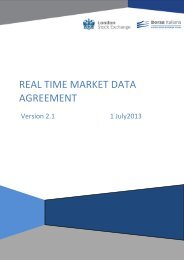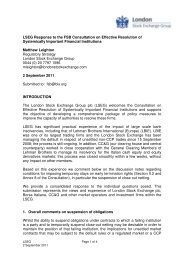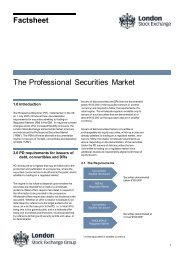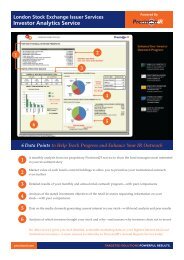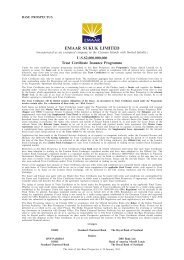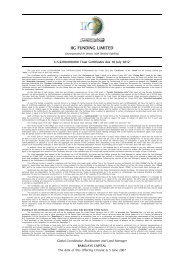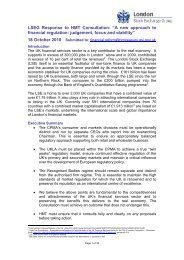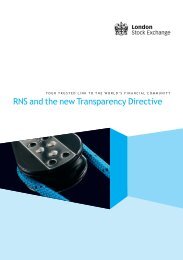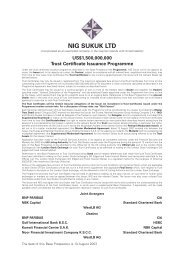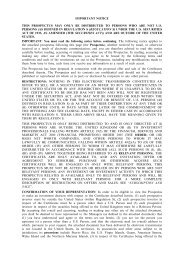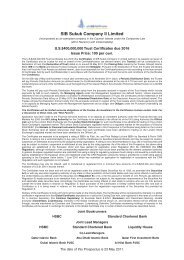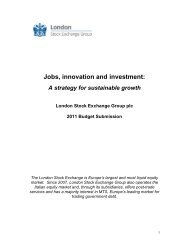Investor Relations - A Practical Guide - Investis
Investor Relations - A Practical Guide - Investis
Investor Relations - A Practical Guide - Investis
You also want an ePaper? Increase the reach of your titles
YUMPU automatically turns print PDFs into web optimized ePapers that Google loves.
Reviewing annual reports (both<br />
printed and online) for the <strong>Investor</strong><br />
<strong>Relations</strong> Society’s Best Practice<br />
Awards, it is noticeable that there are<br />
considerable differences in<br />
performance.<br />
Many companies communicate their strategy,<br />
performance, governance and risks effectively<br />
in their annual reports, presenting the<br />
information in such a way that enables readers<br />
to quickly understand each aspect.<br />
However in many cases strategy is not clearly<br />
stated up front and business drivers are not<br />
explained. It was also felt that discussion on<br />
corporate governance, an area which is coming<br />
under much closer scrutiny and one where there<br />
is an opportunity for companies to show how<br />
best practice is embedded in their culture,<br />
could be improved.<br />
The challenge going forward therefore is for<br />
companies to be clearer, briefer and more<br />
strategic with the content of their annual<br />
reports so that they gain the attention of<br />
investors.<br />
Michael Mitchell<br />
General Manager,<br />
The <strong>Investor</strong> <strong>Relations</strong> Society<br />
Indeed, it is these and other ‘softer’ elements of<br />
company reporting that have come more to the<br />
fore in recent years – partly as a result of the<br />
changing regulatory environment and partly due to<br />
changing focus from companies and investors.<br />
Increasingly, companies are including a range of<br />
‘non-financial’ key performance indicators (KPIs)<br />
alongside the more traditional financial measures<br />
of performance. These range from indicators such<br />
as ‘footfall per unit’ in the case of, say, a retail<br />
operation to those associated with corporate<br />
responsibility programmes, such as environmental<br />
and employee satisfaction indicators. The idea<br />
behind this non-financial focus is to give readers a<br />
wider appreciation of how the company is<br />
operating along with other reputational factors that<br />
might impact the bottom line.<br />
Design<br />
There is, of course, little point in drawing together<br />
lots of detailed financial and non-financial<br />
information if no-one can access the information or<br />
no-one wants to access the information because it<br />
looks too complicated. Many companies nowadays<br />
hire the services of annual report design and<br />
consultancy specialists to help them structure and<br />
design the content – in both print and online. The<br />
navigational aids and look and feel should be<br />
specifically designed to help guide readers through<br />
the maze of information included within the report.<br />
It is also worth bearing in mind that your audiences<br />
will want to access the information in different<br />
ways. Some will want to read all of the content in<br />
depth, but many will be looking for a quick read<br />
approach, so pulling out key messages and<br />
content is crucial.<br />
58<br />
Building the <strong>Investor</strong> <strong>Relations</strong> Programme



